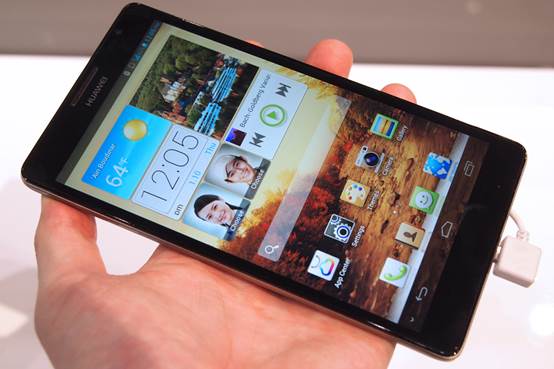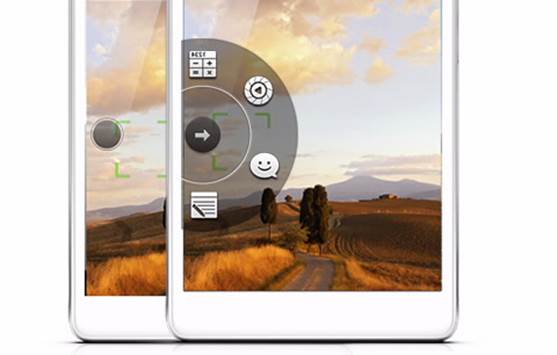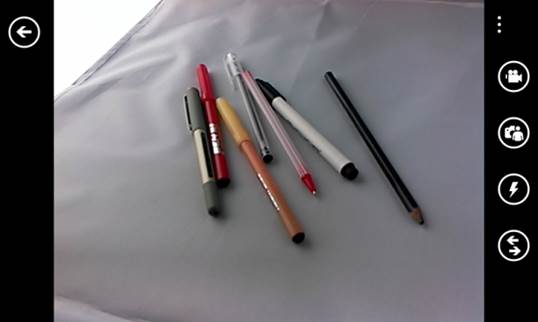Software
Mostly, Emotion UI of Huawei is a minimum
activity. The factors such as customized lock screen, 3D Home and the themes
are enough to remind us that we haven’t chosen the wrong Nexus, but mostly the
company still stays loyal to the Holo interface concept of Google, no matter
what the result is.
Ascend Mate moves aside most of that. While
the phone has a welcome upgrade to Jelly Bean (accurately, Android 4.1.2) and
brings the colorful notifications as well as Google Now to the front, the
equivalent Emotion UI 1.5 refresh is an intense overhaul that stick closer to
what we have seen from the other Chinese providers. Its overhaul starts with
the new design: Huawei turns its visual subject into default, and there’s no
option to turn back. At least there’re more sophisticated themes this time. you
can choose from 20(!) included themes, mixing and matching font, icon system,
lock screen and their sound up to your likes.

Huawei
turns its visual subject into default, and there’s no option to turn back.
The huge change in awareness happens when
you find the app drawer: nothing is there. The same to what we realize from Meizu
and Xiaomi, anything on your home screen represents all the apps you have, and
removing the icons will uninstall the app itself. This iOS-like concept is more
understandable – it also means that there’s a loss in precious screen space for
the apps which you may just use occasionally. The predecessor Huawei takes one
further steps in slightly reducing the affection by creating space for 25 icons
on each screen, allowing the maximum number of 9 home screens and performing
easy-to-use folder system. However, it will require some caretaker job to stop
everything from going beyond the control.
Of course, the changes don’t stop there,
and they’re largely positive regardless of that initial shock. After passing
over a lock screen full of familiar shortcuts, normally you will see Me Widget.
Imagine it as a bento box for info: you can blend and match a group of
utilities chosen by Huawei for the clock, contact, music, image and weather,
all of which fit perfectly in the preset area. We have taken good use of it,
though you can remove the utility if it’s occupying too much space.
Notification bar has caught up with the rivals with custom settings shortcut,
and multi-tasking overview has useful “sweep” button that lets you immediately
escape from all apps. Other additions? There’s iOS-style Smart Reading component
allowing users to quickly find the words in Google, Wikipedia or translator
driver, while those who’re tired with re-configure the phone for home and work have
fast access to the device profiles.

Of
course, the changes don’t stop there, and they’re largely positive regardless
of that initial shock.
Some Emotion UI updates are designed in
order to aim toward Ascend Mate. For example you can choose pad for some
smaller fingers or keyboard. This mode proves to be useful for such wide device,
though the switch is buried in OS settings instead of on the keyboard. Those
who insist of taking advantages of the screen may hide the on-demand navigation
bar.

Some
Emotion UI updates are designed in order to aim toward Ascend Mate
There’re some boring additions. Easy Panel is
an equivalent thing to the mini apps which we see from LG, Samsung, Sony etc., but
it’s pretty basic. The floating apps are limited with only 1 1 calculator and 1
notepad, along with the shortcuts for the normal Gallery and Messaging apps.
Curiously, we can’t also launch Google Now from the navigation bar without
launching 1 app first. Guiding Wizard seems to be completely forgotten on our
Ascend Mate; we contact to find out what happens. The new Emotion UI has more
success than failure, it’s obvious that Huawei is still trying to have a
thorough grasp of Android customization when the rivals have become
professional.
Camera
Have you ever used camera of D1 Quad XL before?
If the answer is yes, in general you know what to expect with Ascend Mate. The
software hasn’t changed much. Photographers can attach to the default Smart mode
or choose from some presets. choosing Normal mode and the software opens the
full controls for the settings such as exposure, saturation and white balance. Huawei
doesn’t go too far with the camera features as HTC and Samsung do, but it has beauty,
burst, group, HDR, low-light, panorama and smile modes. Most of them work as
promised, despite with the visible limits. Panorama mode creates a 90-degree
narrow arc, and HDR mode proves to be better in making the subjects stand out
in the dark rather than recover the details in brightly-lit images.

Huawei
doesn’t go too far with the camera features as HTC and Samsung do
The output is generally good, but it’s not
as good as the class of the latest premium smartphones. The 8MP rear camera is
backlit in order to create clear daylight shot with interestingly blurred
background for close-up shots, and the shooting delay as well as the focus are
pretty fast (though bot pretty fast). However, sometimes the Smart mode creates
strange result. It occasionally underexposures, creating what can be best
described as a “burnt” exterior with the over-dark areas and muted or
washed-out colors. At the same time, camera usually glows the sky and other
details. Lowlight shooting is also a clear problem, as the camera can’t absorb
the ambient light as well as better portable cameras we have seen. How about
the 1MP front camera? It can only pause, and won’t challenge what HTC or
Samsung deliver in res or overall quality.

The
output is generally good, but it’s not as good as the class of the latest
premium smartphones.
Recording video witnesses a mild upgrade
from what we have seen in D1 Quad XL. You can record 1,080p video with the
speed of 30fps which is more common than at 24.8fps before, helping to reduce
eye sore and keep more details in each frame. Image quality meets the obstacles
as with images, though the 24Mbps bit speed reduces the visual artifacts and
lead to unusually integral sound. However, Huawei still doesn’t introduce the
support for tap-to-focus or concurrently shooting and video features.